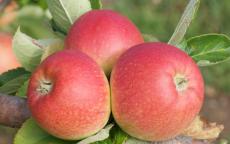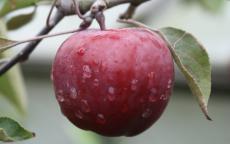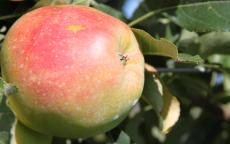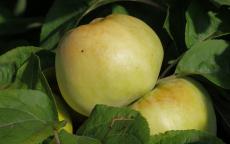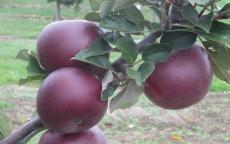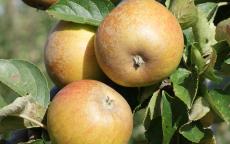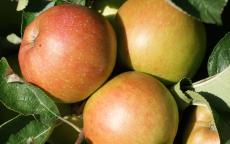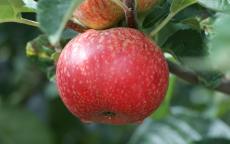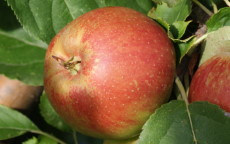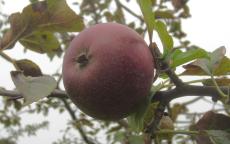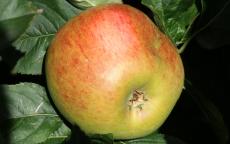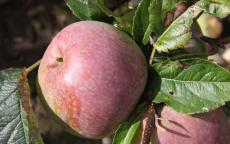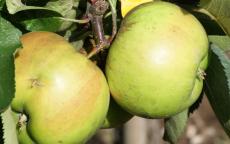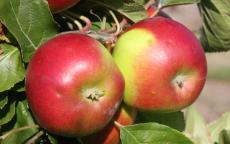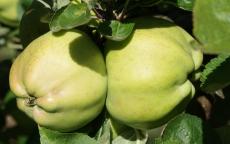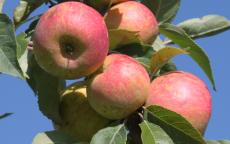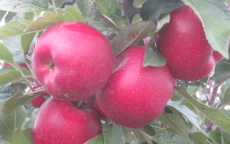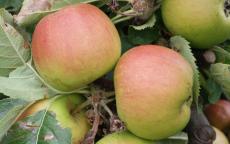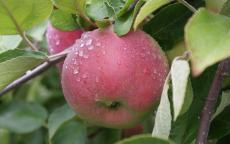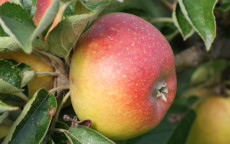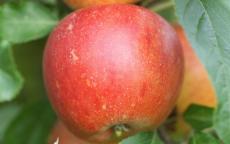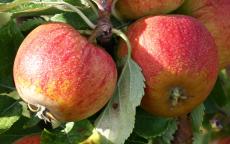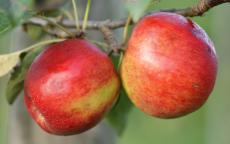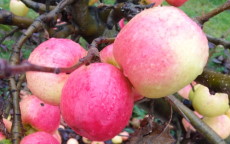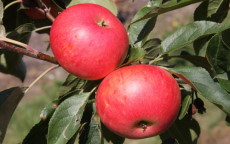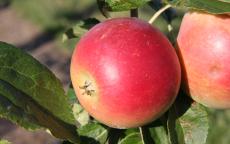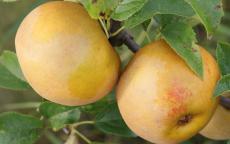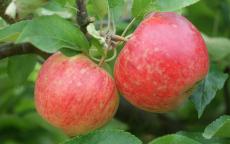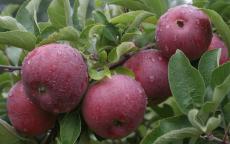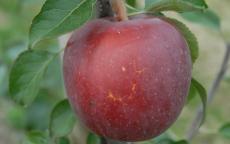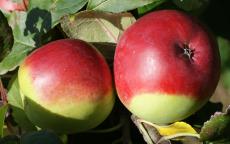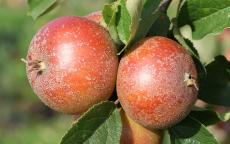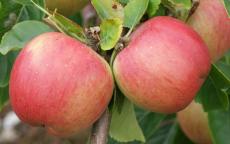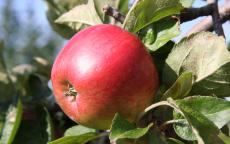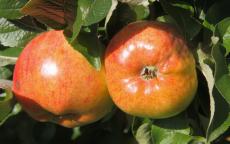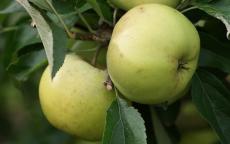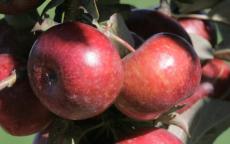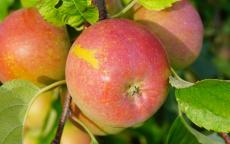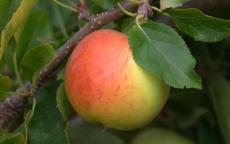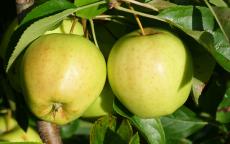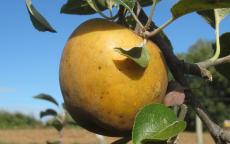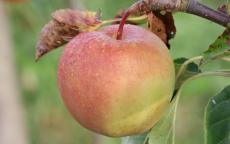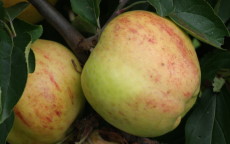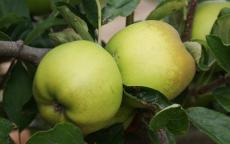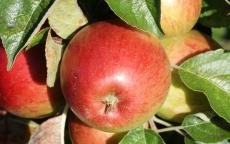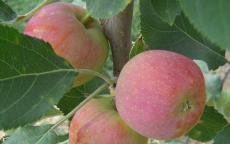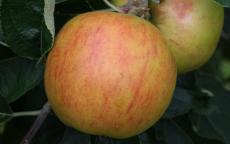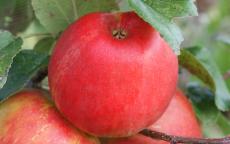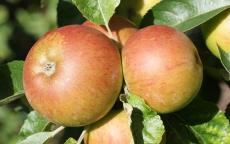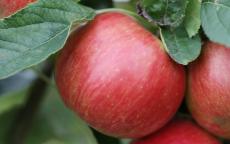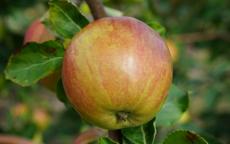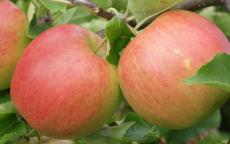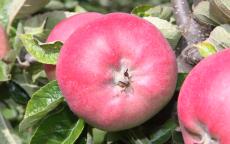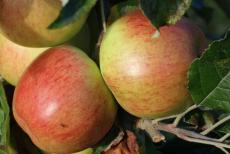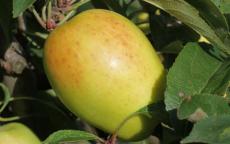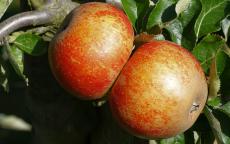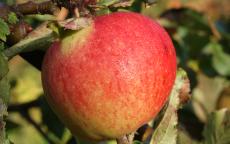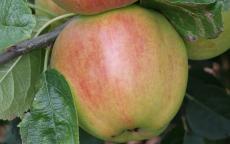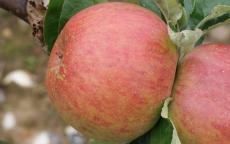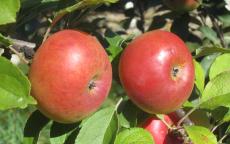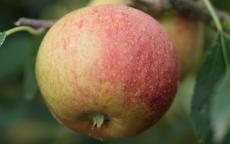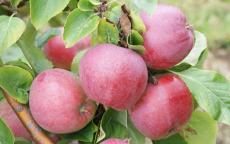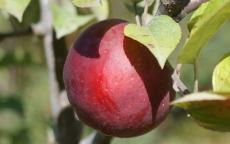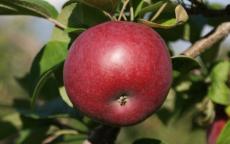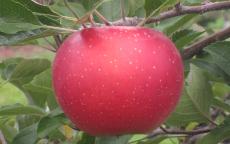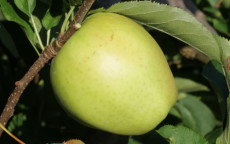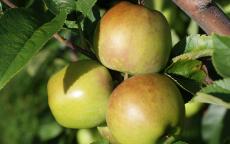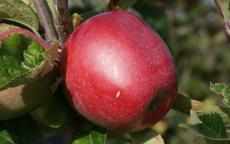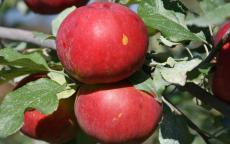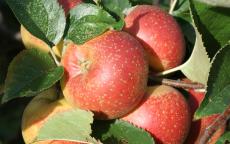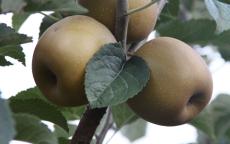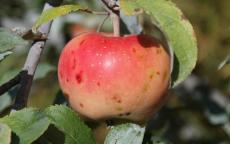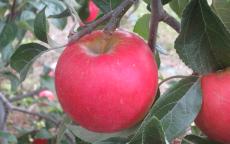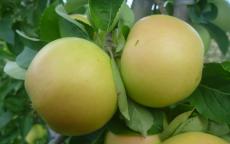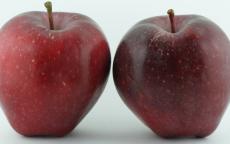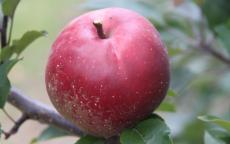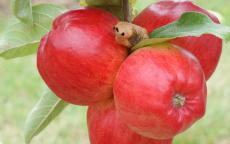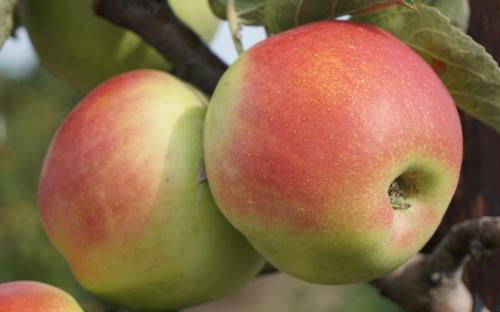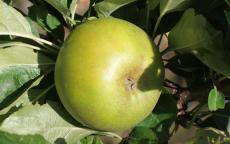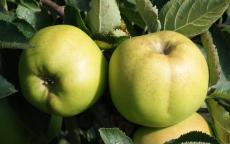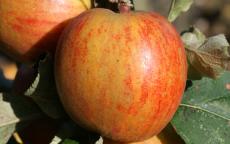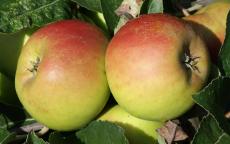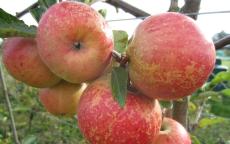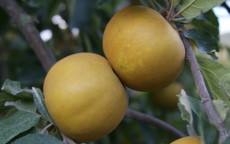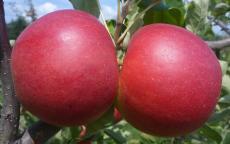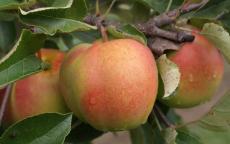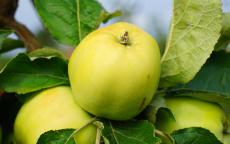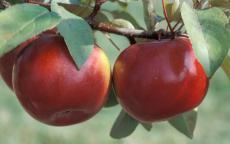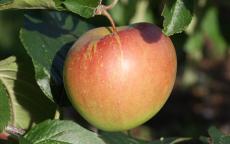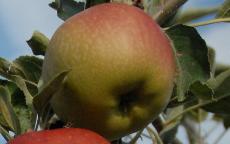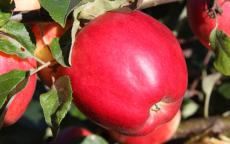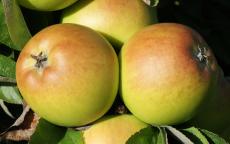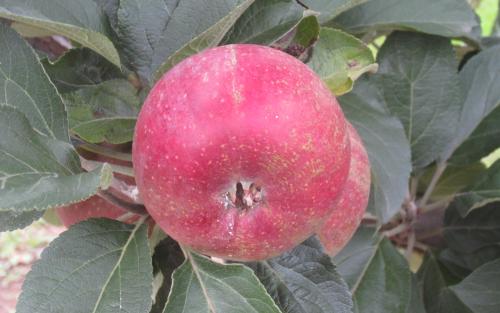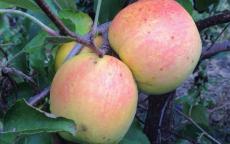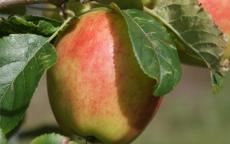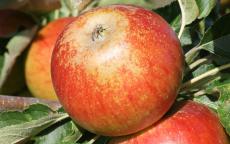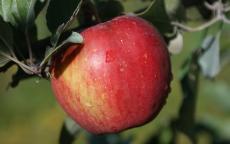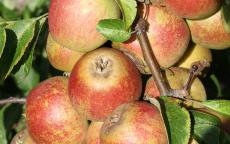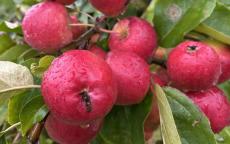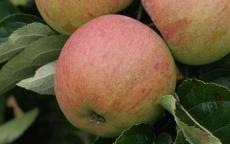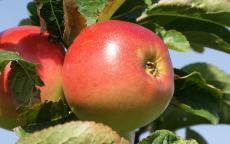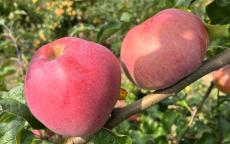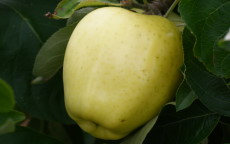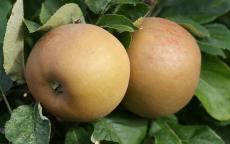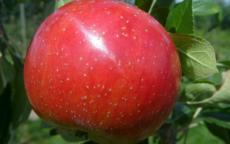- Sub-categories:
- Apple trees for the northern states42
- Apples trees for the south12
- Apple trees for California / south-west15
- Red-flesh apple trees3
Apple trees
We have a huge range of apple trees for sale and can advise on all aspects of choosing, planting, growing and pruning.them.
Akane
Akane is an attractive early-season eating apple with a good pedigree and a sweet/sharp flavor.- Picking season: Early
- Self-fertility: Not self-fertile
- Pollination group: 4
Alkmene
Alkmene is a mid-season apple from Germany, related to to Cox but with a more robust flavor.- Picking season: Mid
- Self-fertility: Self-fertile
- Pollination group: 2
Almata
Almata is a red-fleshed apple, with an acidic flavor. The blossom is deep red.- Picking season: Early
- Self-fertility: Not self-fertile
- Pollination group: 1
Anna
Anna is the go-to apple apple variety for growers in low-chill climates - if you are in southern California, or the southern states, Anna is a good choice.- Picking season: Very early
- Self-fertility: Partially self-fertile
- Pollination group: 1
Antonovka
Antonovka is one of the most cold-hardy of all apple varieties.- Picking season: Early
- Self-fertility: Not self-fertile
- Pollination group: 3
Arkansas Black
Arkansas Black is an unusual and attractive apple, used as a winter apple after maturing in a cold store.- Picking season: Late
- Self-fertility: Not self-fertile
- Pollination group: 3
Ashmead's Kernel
Best sellerA versatile English 17th century russet apple, Ashmead's Kernel is noted for its distinctive pear-like flavor.- Picking season: Late
- Self-fertility: Not self-fertile
- Pollination group: 4
Baldwin
Baldwin is an American heirloom apples, sweet and crisp for eating fresh or cooking.- Picking season: Late
- Self-fertility: Not self-fertile
- Pollination group: 4
Beauty of Bath
One of the earliest English apples, ripening in early August.- Picking season: Very early
- Self-fertility: Not self-fertile
- Pollination group: 3
Belle de Boskoop
A versatile and popular dual-purpose 19th century Dutch apple, still grown commercially in Europe.- Picking season: Late
- Self-fertility: Not self-fertile
- Pollination group: 3
Black Oxford
A good quality hardy traditional New England apple which keeps well.- Picking season: Late
- Self-fertility: Not self-fertile
- Pollination group: 4
Blenheim Orange
Blenheim Orange is a classic English dual-purpose apple, useful for dessert and cooking with.- Picking season: Late
- Self-fertility: Not self-fertile
- Pollination group: 3
BlondeeTM
Blondee is bright yellow sweet mid-season apple, closely related to Gala.- Picking season: Mid
- Self-fertility: Not self-fertile
- Pollination group: 4
Blue Pearmain
An old-fashioned winter eating apple, with a strong sweet/sharp flavor.- Picking season: Late
- Self-fertility: Not self-fertile
- Pollination group: 3
Bonkers NY35
Bonkers (NY35) is an interesting cross between Liberty and Delicious, with the best characteristics of both.- Picking season: Late
- Self-fertility: Not self-fertile
- Pollination group: 3
Bramley's Seedling
Best sellerBramley is the essential English cooking and sharp cider apple, famous for its rich tangy acidity.- Picking season: Late
- Self-fertility: Not self-fertile
- Pollination group: 3
Burgundy
A mid-season apple variety with a good flavor, and good for juicing.- Picking season: Mid
- Self-fertility: Not self-fertile
- Pollination group: 3
Calville Blanc
Best sellerOne of the world's great cooking apples, Calville Blanc is a French variety with a spicy tangy flavor.- Picking season: Late
- Self-fertility: Not self-fertile
- Pollination group: 4
Chestnut Crab
A large-fruited cold-hardy crab-apple.- Picking season: Mid
- Self-fertility: Not self-fertile
- Pollination group: 3
Chieftain
A quietly popular apple, similar to Delicious but with a better and more complex flavor.- Picking season: Late
- Self-fertility: Not self-fertile
- Pollination group: 4
Claygate Pearmain
Claygate Pearmain is a popular English dessert apple of the Victorian era.- Picking season: Very late
- Self-fertility: Not self-fertile
- Pollination group: 4
Cortland
Developed from McIntosh, Cortland is one of the most widely-grown Mac-style apples.- Picking season: Late
- Self-fertility: Partially self-fertile
- Pollination group: 3
Court Pendu Plat
Court Pendu Plant is a traditional French apple with a pronounced aromatic pear-drop flavor.- Picking season: Late
- Self-fertility: Not self-fertile
- Pollination group: 6
Cox Queen
A modern self-fertile form of the renowned Cox's Orange Pippin, with arguably even better flavor.- Picking season: Mid
- Self-fertility: Self-fertile
- Pollination group: 3
Cox's Orange Pippin
Best sellerCox is widely considered to have the best flavor of any dessert apple variety.- Picking season: Mid
- Self-fertility: Not self-fertile
- Pollination group: 3
CrimsonCrispTM
CrimsonCrisp is a modern scab-resistant apple, with a very crisp flesh. It can be picked over a long-period.- Picking season: Mid
- Self-fertility: Not self-fertile
- Pollination group: 3
CrimsonTopazTM
CrimsonTopaz is a modern scab-resistant variety from the Czech Republic, with a sweet-tart flavor.- Picking season: Late
- Self-fertility: Not self-fertile
- Pollination group: 3
Cripps Pink
Cripps Pink is one of the best-known modern apple varieties, well-suited to the warmer apple-growing regions.- Picking season: Very late
- Self-fertility: Not self-fertile
- Pollination group: 3
Cripps Red
Cripps Red is a late-season low-chill apple from Australia, with a crisp dense flesh and a good flavor.- Picking season: Very late
- Self-fertility: Not self-fertile
- Pollination group: 3
Dayton
Dayton is an attractive red modern disease-resistant apple with crisp flesh and a sweet/tart flavor.- Picking season: Mid
- Self-fertility: Not self-fertile
- Pollination group: 3
Discovery
Discovery is the definitive early-season English apple variety.- Picking season: Early
- Self-fertility: Not self-fertile
- Pollination group: 3
Dolgo
Malus Dolgo, also known as Pink Glow, offers early-season white flowers and dark pink fruits.- Picking season: Early
- Self-fertility: Self-fertile
- Pollination group: 2
Duchess of Oldenburg
An old culinary variety from Russia, popular in North America, and noted for its winter hardiness.- Picking season: Early
- Self-fertility: Not self-fertile
- Pollination group: 2
Edelborsdorfer
A very old apple variety, originating from central Europe.- Picking season: Late
- Self-fertility: Not self-fertile
- Pollination group: 4
Egremont Russet
Egremont Russet is the most popular English russet variety, and a good apple tree for the garden.- Picking season: Late
- Self-fertility: Partially self-fertile
- Pollination group: 2
Elstar
Elstar is an attractive apple with a well-balanced honeyed flavor.- Picking season: Late
- Self-fertility: Not self-fertile
- Pollination group: 3
Empire
One of the most widely-planted McIntosh style apples, Empire has the Mac flavor but improves on it.- Picking season: Late
- Self-fertility: Partially self-fertile
- Pollination group: 3
Enterprise
Best sellerEnterprise is a modern American disease-resistant apple, good for eating fresh and cooking.- Picking season: Very late
- Self-fertility: Not self-fertile
- Pollination group: 4
Erwin Bauer
A fine-flavored late-season eating apple from Germany.- Picking season: Late
- Self-fertility: Not self-fertile
- Pollination group: 3
Fameuse
A very hardy north country apple, known both as the Snow Apple and Fameuse, and the probable parent of McIntosh.- Picking season: Late
- Self-fertility: Not self-fertile
- Pollination group: 2
Fenouillet Gris
Fenouillet Gris is an old French apple variety, noted for its aniseed flavors.- Picking season: Late
- Self-fertility: Not self-fertile
- Pollination group: 4
Florina
A modern disease-resistant variety related to Jonathan and Golden Delicious.- Picking season: Late
- Self-fertility: Not self-fertile
- Pollination group: 4
Freedom
A modern disease-resistant apple variety, similar to McIntosh.- Picking season: Late
- Self-fertility: Not self-fertile
- Pollination group: 3
Freiherr von Berlepsch
A good quality German apple, notable for its characteristic pineapple flavor.- Picking season: Late
- Self-fertility: Not self-fertile
- Pollination group: 3
Freyberg
Freyberg (or Freyburg) is an attractive golden yellow apple with a high-quality sweet refreshing flavor.- Picking season: Late
- Self-fertility: Not self-fertile
- Pollination group: 3
FrostbiteTM
An unusual small apple with a distinctive sweet flavor, and exceptional cold-hardiness.- Picking season: Late
- Self-fertility: Not self-fertile
- Pollination group: 3
Fuji
Developed in Japan, but with all-American parents, Fuji is a very attractive apple with a good sweet flavor.- Picking season: Very late
- Self-fertility: Not self-fertile
- Pollination group: 3
Fuji (early)
Early ripening forms of the Fuji apple variety.- Picking season: Mid
- Self-fertility: Not self-fertile
- Pollination group: 3
Gala
Gala is popular supermarket apple - but better when home-grown, with a sweet pleasant flavor.- Picking season: Mid
- Self-fertility: Partially self-fertile
- Pollination group: 4
Galarina
Galarina is best considered an improved, disease-resistant Gala (to which it is closely related).- Picking season: Late
- Self-fertility: Not self-fertile
- Pollination group: 3
Gilpin
Gilpin is a traditional American an all-purpose apple, an excellent keeper, useful in the kitchen and for cider too.- Picking season: Very late
- Self-fertility: Not self-fertile
- Pollination group: 5
Ginger Gold®
One of the first yellow apples to ripen.- Picking season: Very early
- Self-fertility: Not self-fertile
- Pollination group: 4
Golden Delicious
The flavor of home-grown Golden Delicious is far better than its supermarket reputation.- Picking season: Late
- Self-fertility: Partially self-fertile
- Pollination group: 4
Golden Russet
Best sellerGolden Russet is an antique apple from New York, considered the best-flavored of American russets.- Picking season: Late
- Self-fertility: Not self-fertile
- Pollination group: 2
GoldRush
Best sellerGoldRush is a modern disease-resistant apple, like Golden Delicious but with a better tart/sweet balance. It is also one of the best new hard-cider varieties.- Picking season: Very late
- Self-fertility: Not self-fertile
- Pollination group: 4
Granny Smith
Granny Smith is the world-famous green apple from Australia, a good choice for warmer apple-growing regions.- Picking season: Very late
- Self-fertility: Self-fertile
- Pollination group: 3
Gravenstein
Gravenstein is a high-quality early-season eating and cooking apple, with an excellent strong apple flavor.- Picking season: Early
- Self-fertility: Not self-fertile
- Pollination group: 1
Grimes Golden
A high quality apple, Grimes Golden is probably the parent of Golden Delicious, but with a richer flavor.- Picking season: Late
- Self-fertility: Self-fertile
- Pollination group: 3
Haralson
Haralson is a great all-round backyard apple variety, disease-resistant and cold-hardy.- Picking season: Very late
- Self-fertility: Not self-fertile
- Pollination group: 3
Hewe's Virginia
Best sellerAlso known as Virginia Crab, Hewe's Crab is considered one of the best varieties for cider.- Picking season: Late
- Self-fertility: Self-fertile
- Pollination group: 3
Holstein
A high-quality apple from Germany, noted for its good flavor and excellent juice.- Picking season: Late
- Self-fertility: Not self-fertile
- Pollination group: 3
Honeycrisp
Best sellerHoneycrisp is a cold-hardy disease-resistant apple - it shows just how good modern apples have become.- Picking season: Late
- Self-fertility: Not self-fertile
- Pollination group: 4
Hubbardston Nonsuch
An old heirloom apple variety named after the town in Massuchusetts.- Picking season: Late
- Self-fertility: Not self-fertile
- Pollination group: 4
Hudson's Golden Gem
A large yellow russeted apple with an excellent sweet flavor.- Picking season: Late
- Self-fertility: Not self-fertile
- Pollination group: 3
Idared
A popular and versatile apple, especially good for juicing, and an exceptional keeper.- Picking season: Late
- Self-fertility: Not self-fertile
- Pollination group: 2
Isaac Newton's Tree
The old Engish variety known as Flower of Kent is the variety of apple tree the famous scientist sat under.- Picking season: Late
- Self-fertility: Not self-fertile
- Pollination group: 5
Jonagold
Jonagold is a high quality American apple, with a good balanced sweet/sharp flavor.- Picking season: Late
- Self-fertility: Not self-fertile
- Pollination group: 4
Jonalicious
An interesting cross of Red Delicious and Jonathan, for eating fresh or baking.- Picking season: Late
- Self-fertility: Not self-fertile
- Pollination group: 5
Jonathan
One of the best-flavored US apple varieties, a good choice for the backyard orchard.- Picking season: Late
- Self-fertility: Partially self-fertile
- Pollination group: 3
Kandil Sinap
An unusual but beautiful looking apple, with a sweet scented flavor.- Picking season: Late
- Self-fertility: Not self-fertile
- Pollination group: 3
Karmijn de Sonnaville
A rare Cox-style apple from the Netherlands, with the potential for very good flavor.- Picking season: Late
- Self-fertility: Not self-fertile
- Pollination group: 4
Keepsake
A high-quality late-season eating apple, keeps well, and at its best in mid-winter.- Picking season: Very late
- Self-fertility: Not self-fertile
- Pollination group: 4
Kidd's Orange Red
Kidd's Orange Red is one of the best Cox-style apples, aromatic, sweet, and easy to grow.- Picking season: Late
- Self-fertility: Not self-fertile
- Pollination group: 3
King David
A popular Arkansas variety with a rich southern flavor.- Picking season: Very late
- Self-fertility: Not self-fertile
- Pollination group: 3
King of Tompkins County
An heirloom apple from New York state, primarily used for cooking.- Picking season: Late
- Self-fertility: Not self-fertile
- Pollination group: 3
Lady
A small highly flavored apple variety from France, where it is known as Api. It is thought to be very old.- Picking season: Late
- Self-fertility: Not self-fertile
- Pollination group: 3
Laxton's Superb
Laxton's Superb is a deservedly popular English late-season dessert apple from the Victorian era.- Picking season: Late
- Self-fertility: Partially self-fertile
- Pollination group: 4
Liberty
Best sellerLiberty is a popular disease-resistant apple, large crops of bright red apples, similar to McIntosh.- Picking season: Late
- Self-fertility: Not self-fertile
- Pollination group: 2
Macoun
Macoun is one of the best McIntosh-style apples, with the characteristic flowery vinous flavor.- Picking season: Late
- Self-fertility: Not self-fertile
- Pollination group: 3
Margil
An 18th century French apple variety with an aromatic and complex flavor.- Picking season: Late
- Self-fertility: Not self-fertile
- Pollination group: 3
McIntosh
A traditional versatile apple popular in the northern states of the USA. Also known as Macintosh.- Picking season: Late
- Self-fertility: Not self-fertile
- Pollination group: 2
Melrose
Melrose is a Jonathan-style apple, with a sweet flavor and good storage life.- Picking season: Late
- Self-fertility: Not self-fertile
- Pollination group: 3
Mutsu
Mutsu (or Crispin) is a high quality apple from Japan, with a good flavor, and also sharp enough for cooking.- Picking season: Late
- Self-fertility: Not self-fertile
- Pollination group: 3
Newtown Pippin
Best sellerIn use since the 18th century, Newtown Pippin is a versatile American apple with a good aromatic flavor.- Picking season: Late
- Self-fertility: Not self-fertile
- Pollination group: 3
Northern Spy
Best sellerNorthern Spy is a popular late-season American heirloom apple variety which stores well.- Picking season: Very late
- Self-fertility: Not self-fertile
- Pollination group: 5
Novaspy
An improved form of Northern Spy, and an excellent all-round apple for northern areas.- Picking season: Late
- Self-fertility: Not self-fertile
- Pollination group: 3
Orleans Reinette
Orleans Reinette is a traditional French apple variety, and remains popular for its old-fashioned flavour.- Picking season: Late
- Self-fertility: Not self-fertile
- Pollination group: 4
Pine Golden Pippin
A classic English russet apple from the Victorian era, notable for its pineapple-like flavor.- Picking season: Late
- Self-fertility: Not self-fertile
- Pollination group: 5
Pink Pearl
Pink Pearl features bright pink flesh, and pink apple blossom.- Picking season: Early
- Self-fertility: Not self-fertile
- Pollination group: 1
Pixie CrunchTM
Best sellerPixie Crunch is a small modern disease-resistant apple with a crisp flesh and great flavor.- Picking season: Mid
- Self-fertility: Not self-fertile
- Pollination group: 4
Pristine
A very early disease-resistant golden-green apple with a tart flavor.- Picking season: Very early
- Self-fertility: Not self-fertile
- Pollination group: 4
Red Delicious
Delicious is one of the most popular red apples, productive and easy to grow.- Picking season: Late
- Self-fertility: Not self-fertile
- Pollination group: 4
Redfield
An unusual apple / crab-apple cross, with distinctive red-flesh.- Picking season: Late
- Self-fertility: Not self-fertile
- Pollination group: 3
Redfree
A disease-resistant and cold-hardy summer apple with a sweet flavor, also known as Co-op 13.- Picking season: Early
- Self-fertility: Not self-fertile
- Pollination group: 3
Regent
Regent is a large attractive late-season eating apple with a juicy crisp flesh and a sweet flavor.- Picking season: Late
- Self-fertility: Not self-fertile
- Pollination group: 3
Reinette Clochard
A traditional French sweet-flavored dual-purpose apple.- Picking season: Late
- Self-fertility: Not self-fertile
- Pollination group: 4
Rhode Island Greening
Rhode Island Greening is a well-regarded American heirloom variety, particularly good for cooking.- Picking season: Late
- Self-fertility: Not self-fertile
- Pollination group: 3
Ribston Pippin
A handsome English apple from the 18th century.- Picking season: Late
- Self-fertility: Not self-fertile
- Pollination group: 3
Roxbury Russet
Best sellerRoxbury Russet is probably the oldest apple variety originating from North America.- Picking season: Late
- Self-fertility: Not self-fertile
- Pollination group: 4
Rubinette
Best sellerConsidered by many to be the best-tasting apple ever, Rubinette has a perfect sweet / sharp flavour.- Picking season: Late
- Self-fertility: Not self-fertile
- Pollination group: 3
Saint Edmund's Russet
Not as well known as other russets, St. Edmund's Russet is nevertheless one of the best.- Picking season: Mid
- Self-fertility: Partially self-fertile
- Pollination group: 3
Sansa
A high quality early-season apple variety with a notably sweet flavor.- Picking season: Early
- Self-fertility: Not self-fertile
- Pollination group: 4
Scarlett O'HaraTM
Scarlett O'Hara is a modern disease-resistant red eating apple,- Picking season: Late
- Self-fertility: Not self-fertile
- Pollination group: 4
Shizuka
A large sweet-flavored crisp eating apple from Japan.- Picking season: Late
- Self-fertility: Not self-fertile
- Pollination group: 3
Slavyanka
Slavyanka is a cold-hardy late-season eating apple from Russia.- Picking season: Late
- Self-fertility: Not self-fertile
- Pollination group: 2
SnowSweet®
A rich sweet-flavored red apple which grows best in the northern states.- Picking season: Late
- Self-fertility: Not self-fertile
- Pollination group: 3
Spartan
Spartan produces lots of crimson maroon apples, crunchy, sweet, easy to grow, and a delicate "vinous" flavor.- Picking season: Late
- Self-fertility: Partially self-fertile
- Pollination group: 3
Spigold
A good-tasting cross between Northern Spy and Golden Delicious.- Picking season: Late
- Self-fertility: Not self-fertile
- Pollination group: 4
Spitzenburg
Best sellerEsopus Spitzenberg is one of the best-flavored American heirloom apples, and a favorite of Thomas Jefferson.- Picking season: Late
- Self-fertility: Not self-fertile
- Pollination group: 4
State Fair
State Fair is a bright red summer apple, with a juicy firm flesh and sweet/tart flavor.- Picking season: Early
- Self-fertility: Not self-fertile
- Pollination group: 4
Sturmer Pippin
A traditional late-season English apple, ideal for storing.- Picking season: Late
- Self-fertility: Partially self-fertile
- Pollination group: 3
Summer Rambo
Summer Rambo is a well-known summer apple, notable for its juiciness and pleasing flavors.- Picking season: Early
SunCrispTM
A high-quality late-season eating apple with plenty of interesting flavor.- Picking season: Late
- Self-fertility: Not self-fertile
- Pollination group: 3
SundanceTM
Best sellerA high-quality late-season eating apple, with excellent flavor and disease-resistant qualities.- Picking season: Late
- Self-fertility: Not self-fertile
- Pollination group: 4
Sunrise
Sunrise is a bright red-flushed Canadian apple with a soft flesh and sweet flavor.- Picking season: Early
- Picking season: Mid
- Self-fertility: Not self-fertile
- Pollination group: 2
Suntan
An attractive English late-season dessert apple with excellent sweet-sharp aromatic flavors.- Picking season: Late
- Self-fertility: Not self-fertile
- Pollination group: 5
Sweet Sixteen
Sweet 16 is a sweet-flavored apple, with good cold hardiness.- Picking season: Mid
- Self-fertility: Not self-fertile
- Pollination group: 3
TriumphTM
Also known as MN80, Triumph is a new release from the well-regarded University of Minnesota apple breeding program.- Picking season: Late
- Self-fertility: Not self-fertile
- Pollination group: 3
Tydeman's Late Orange
An excellent late-season Cox-style aromatic apple.- Picking season: Late
- Self-fertility: Not self-fertile
- Pollination group: 4
Wealthy
Wealthy is a dual-purpose apple, with an excellent reputation for cold-hardiness.- Picking season: Very late
- Self-fertility: Not self-fertile
- Pollination group: 3
Wickson Crab
Best sellerWickson crab is a popular crab apple variety which is also useful in cider blends.- Picking season: Late
- Self-fertility: Not self-fertile
- Pollination group: 2
Williams' Pride
An early summer apple, with excellent disease-resistance and a pleasant tart flavor.- Picking season: Very early
- Self-fertility: Not self-fertile
- Pollination group: 2
WineCrispTM
WineCrisp is a modern disease-resistant apple with a spicy flavor. Also known as Co-op 31.- Picking season: Late
- Self-fertility: Not self-fertile
- Pollination group: 3
Winesap
Winesap is a popular southern heirloom apple, widely grown in Virginia in the 19th century.- Picking season: Late
- Self-fertility: Not self-fertile
- Pollination group: 3
Winter Banana
A good quality American apple variety named for its faint banana-like flavor.- Picking season: Very late
- Self-fertility: Not self-fertile
- Pollination group: 4
Wolf River
Wolf River is the perfect cooking apple for the north - reliable, cold-hardy, disease resistant.- Picking season: Late
- Self-fertility: Not self-fertile
- Pollination group: 3
Yellow Transparent
A traditional very early-season dual-purpose apple, which is also very winter-hardy.- Picking season: Very early
- Self-fertility: Partially self-fertile
- Pollination group: 2
Zabergau Reinette
Zabergau Reinette is a well-regarded russet apple from Germany with a strong well-balanced flavor.- Picking season: Late
- Self-fertility: Not self-fertile
- Pollination group: 3
Zestar!
A crisp attractive early-season apple which stores well.- Picking season: Early
- Self-fertility: Not self-fertile
- Pollination group: 1
How to choose Apple trees
Apples are perhaps the most versatile of all temperate fruits, and one of the most widely cultivated tree fruits. Almost all cultivated apple varieties belong to the species Malus domestica, and are botanically part of the Rose family (Rosaceae). Apple blossom has an obvious resemblance to wild rose flowers. Apples trees were one of the earliest fruit trees to be cultivated, and originate from central Asia. There are now thousands of different apple cultivars or varieties.
Apple trees are generally easy to grow, and because there are so many apple varieties there is invariably a good choice for almost any growing situation, from cool temperate to subtropical climates. We offer bare-root apple trees on a range of rootstocks, including dwarf, semi-dwarf and full-size.
Apples display perhaps a greater range of flavors, appearance, and texture than any other tree fruits. This diversity makes apples a particularly satisifying fruit for growing at home in your garden or backyard orchard Without much difficulty (or space) one can grow a number of different apple trees which will keep a family supplied with fresh apples from mid-summer to late fall, and with a good spread of flavors and uses.


